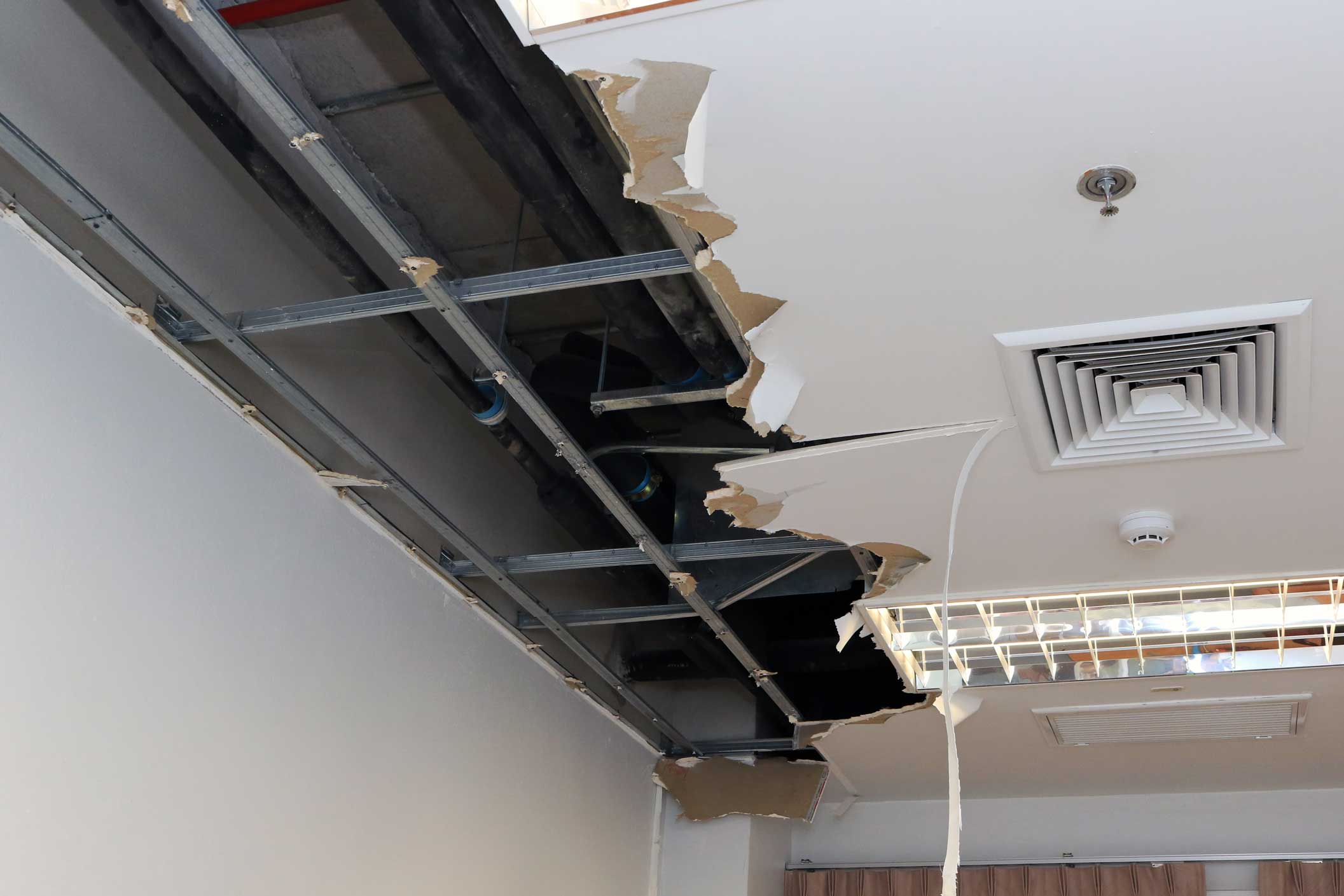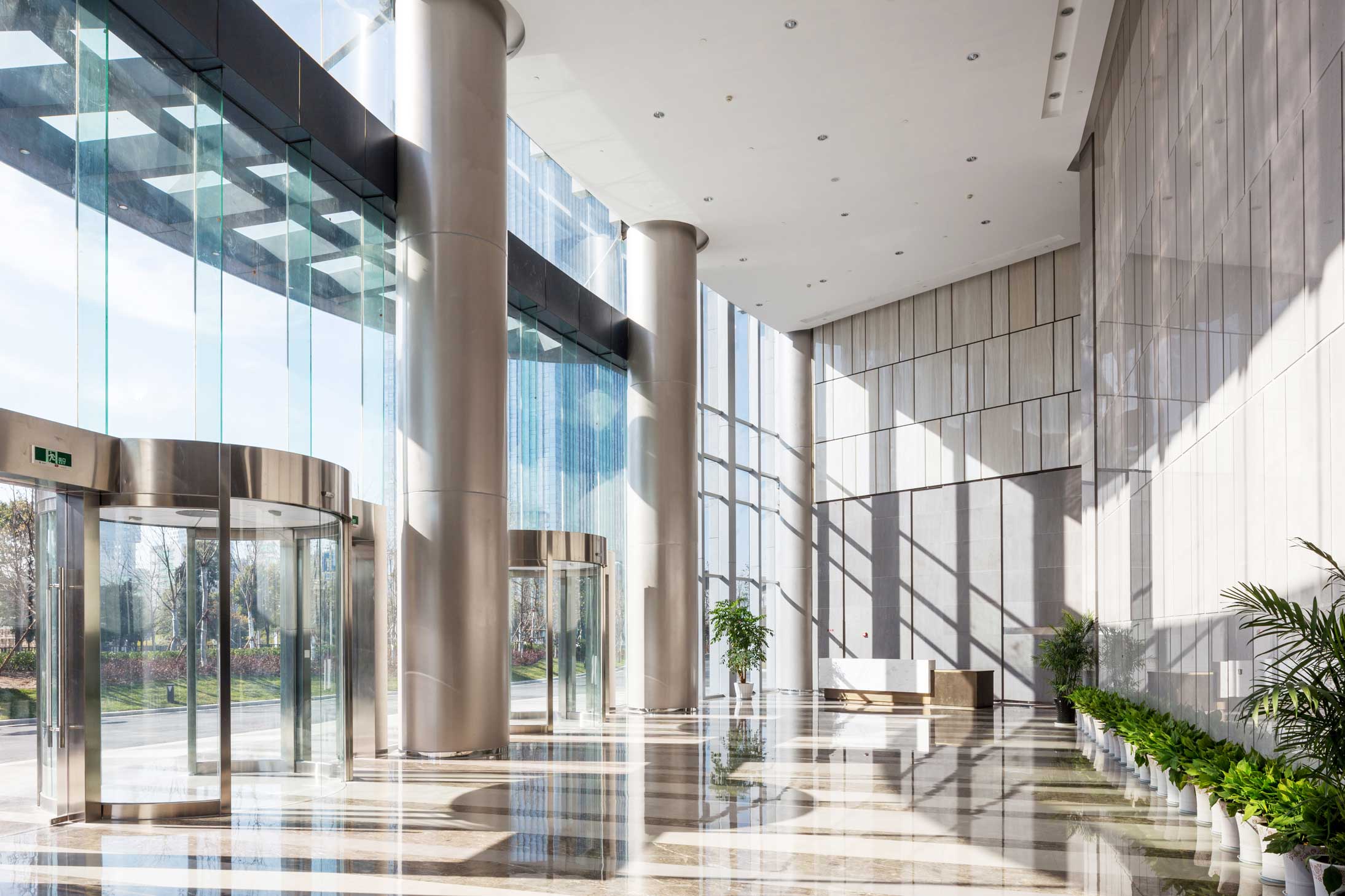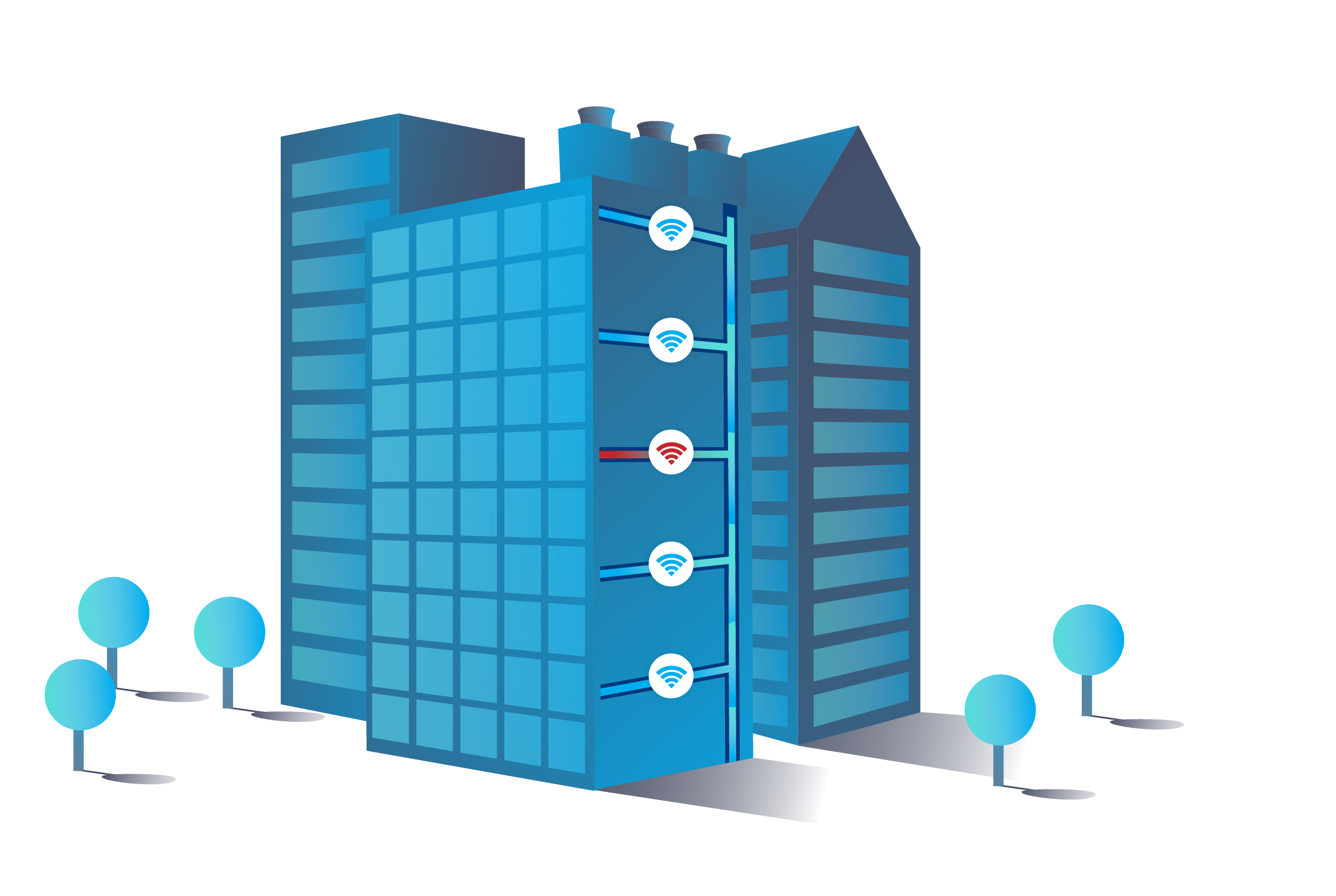If you look up at the ceiling and see water dripping down, you know you’re about to have a bad day. Whether you’re the property owner, a facility manager, a general contractor, or part of an inspection team at a construction site – water damage in a building's ceiling is a costly ordeal. And when it rains, it pours – every moment that passes only raises the potential cost of restorations.
Water damage accounts for the third-highest number of insurance claims for global business in Property and Casualty (P&C) policies. Leaks in ceilings stand out as one of the critical causes of water damage, with mitigation costs for commercial buildings reaching millions of dollars. Every drop counts as a dollar lost.
The leading causes of water damage in ceilings
Insurance provider Chubb recently studied the top reasons for water damage in ceilings in commercial buildings and facilities. These include the following breakdown:
- Roof leaks – Roof leaks are estimated to make up 15% of all commercial water damage claims and are the leading cause of ceiling water damage in residential and commercial structures.
- Toilet hose leaks – Toilets in multistory structures that employ stacked plumbing are another cause of water damage to ceilings, accounting for 15% of water damage losses.
- Sprinkler malfunctions – Accounting for 14% of commercial water damage loss, sprinkler malfunctions can cause significant damage if not promptly addressed.
- Water heaters – Water heaters, especially common in multi-family residential and hospitality buildings, are responsible for 11% of water damage.
- HVAC issues – With frozen evaporator coils, faulty installation, and clogged drains – heating, ventilation, and air conditioning (HVAC) units typically cause close to 8% of all water damage losses.
- Vacancy risks – While not directly a source of leaks, buildings that remain unoccupied for lengthy periods are at higher risk of extensive and expensive water damage. This translates to about 8% of commercial water damage losses overall.
One effective way to prevent this is by installing an intelligent leak detection and mitigation solution like WINT Water Intelligence, which enables continuous AI-powered analytics that monitor for leaks and automatically stop the water flow in a water event before it becomes damaging. All of this with minimum effort and almost zero manual intervention on-site.

Water damage in ceilings: how damaging can it be, and who pays the price?
Water damage in ceilings can range widely in extent and, consequently, cost. For example, the moldy acoustic tiles above an espresso machine in a kitchenette at a commercial building are primarily an aesthetic problem but can also become a health hazard. But it is easy to fix – simply replace the tile and add a dehumidifier to compensate for the insufficient ventilation.
On the other hand, you could have a cracked pipe leak into the ceiling of a vacant multi-family residential property, causing the ceiling structure to sag and potentially collapse. This is an entirely different story, with a different price tag for everyone involved.
From a business perspective, neglecting to address any sign of ceiling water damage promptly can result in numerous issues. These include disruption to business operations, construction project delays during the build phase, and unexpected mitigation expenses.

Water damage in ceilings directly impacts a business’s ESG score and possible non-compliance with ESG requirements. Such non-compliance can, in turn, lead to monetary fines and irreparable blows to the reputation of your business.
Water damage may also jeopardize your eligibility for certifications like LEED (Leadership in Energy and Environmental Design), BREEAM (Building Research Establishment Environmental Assessment Method), and Nabers Green Buildings standards. For instance, to achieve Gold or Platinum levels in LEED, you must adhere to stringent environmental standards by ensuring the integrity of your building structures, including ceilings.
But who picks up the tab for such a disaster? That highly depends on how thoroughly your insurance policy covers water damage. Traditionally, basic builders' risk policies only cover weather-related water damage, so other common perils – such as undetected pipe leaks – may not be covered. Similarly, Property & Casualty (P&C) insurance policies may not cover certain types of water damage, such as damage caused by gradual leaks or wear and tear. This means you may have to pick up the tab – or at least a large chunk of it.
How to prevent water damage in ceilings
1. Assess your vulnerabilities
The first step to preventing water damage in ceilings is mapping out your risks and potential vulnerabilities. Consider factors like climate, location, and other unique site properties, including the age of the building and its maintenance history. Such an assessment is crucial in identifying areas prone to ceiling water damage, like poorly ventilated areas, boiler rooms, crawlspaces, and underground parking lots. This assessment should be part of your overall construction risk management plan and help you in the inspection stage.
2. Conduct regular inspections
Since water damage worsens when its causes go unaddressed, it is critical to look for the earliest warning signs of potential leaks or other issues that may cause ceiling water damage. Create a building self inspection checklist with timetables and task owners that includes external and internal inspections of the building.
These include:
- Inspections of ceilings in vulnerable areas
- Plumbing and pipes
- Sprinkler system integrity
- HVAC appliances
- Drainage pumps, and other areas of potential ceiling water damage risks that you’ve outlined in the previous step.
3. Prioritize roof maintenance
With roof leaks taking the crown in ceiling water damage losses, it’s essential to prioritize roof inspections and regular maintenance. Depending on the type of roofing, this may include regular re-sealing, replacement of damaged shingles, and frequent maintenance of roof drainage systems.

4. Perform scheduled waterproofing best practices
A leaky roof is not the only common cause of ceiling water damage that requires your attention. Consider manufacturer best practices in replacing sealants and water tanks that may leak due to natural wear and tear. Don’t neglect HVAC system maintenance, plumbing backup prevention, and other preventative best practices.
5. Instal monitoring systems and automatic shut-off valves
The longer any water leak goes undetected, the more damage it causes. Unresolved water leaks can result in rust and corrosion of the pipes, damaged insulation, ruined ceiling building materials, the growth of mold and mildew, and potentially even irreversible structural damage to load-bearing beams.
An increasingly popular approach to preventing ceiling water intrusion damage due to the late (or partial) discovery of a leak is using technological solutions. Some technologies enable intelligent 24/7 monitoring of water flows in commercial and residential multi-family buildings.
WINT Water Intelligence AI and IoT-powered technology has helped various construction and property management companies prevent water damage in their buildings. With WINT’s real-time water management platform, teams don’t always need to be available to run and fix a water leak at a moment’s notice, nor will they need immediate support from a third party.
The systems can automatically shut off the water supply while notifying the relevant stakeholder of the detected leak's precise location and nature and (optionally) automatically contained.
[source: WINT Water Intelligence Technology]
6. Prepare a response plan for ceiling water damage
No matter how thorough you are in ceiling water damage prevention, you must consider the unfortunate scenario where your preventative measures are insufficient to keep your ceilings dry in vulnerable areas.
To ensure you deal with water damage in the ceilings of your building quickly and efficiently, create a readiness plan that outlines the necessary actions to mitigate the damage done and prevent it from spreading.
This plan may include quickly deploying a ceiling leak diverter or expediting the evacuation of valuable objects and equipment from the affected areas. It should also list all the relevant Mechanical, electrical, and plumbing (MEP) service providers and contractors you may need to address the issue with minimal disruption.
Enterprise-grade leak detection for water damage prevention at scale
Preventing water damage in ceilings and mitigating the risk requires a structured approach to locating, assessing, and addressing potential vulnerabilities. With regular inspections, proper maintenance, and automatic real-time detection of water leaks, you can drastically lower the risks of suffering the costly repercussions of undetected leaks in your building or construction worksite.
WINT Water Intelligence AI-driven high-end water management platform is endorsed by leading commercial enterprises, development and construction companies, and insurance providers. WINT’s technology has been proven effective in reducing insurance claims by 75% and losses by 90%.


